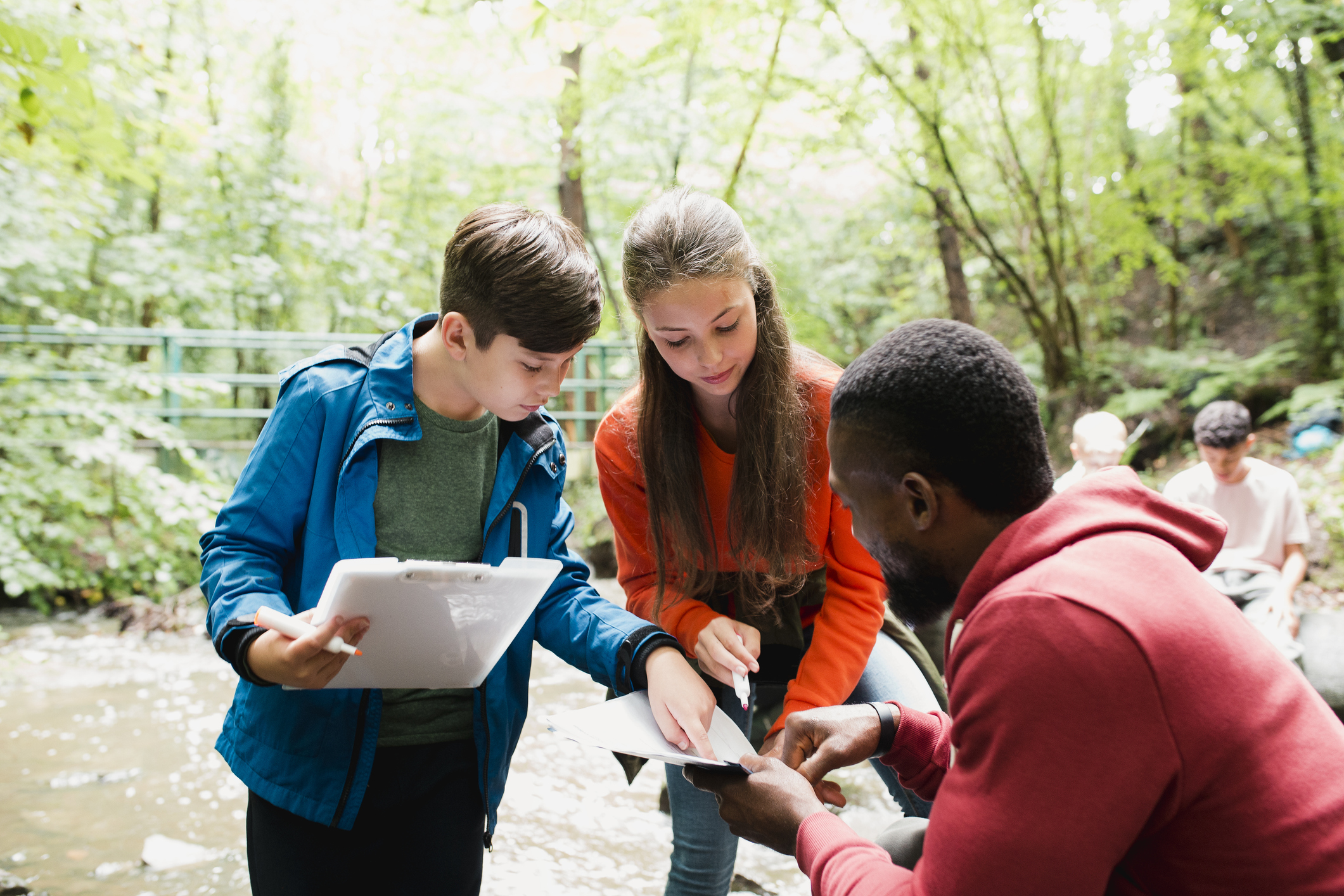A Broader Vision for Schools’ Role in Preparing Students to Be Citizens

Public schools are one of the last remaining institutions that bring people together across lines of race, class, and politics. Their civic role cannot be distilled to a single course. Embracing a broader vision means seeing school as a civic space and the everyday experience of school as an incubator of civic knowledge, skills, and commitment. This work absolutely has to include strong, content-rich civics instruction. But it must also include the lived experience of belonging, the power of curriculum to awaken civic curiosity, and the development of durable skills that are valued across civic and career contexts.
Public schools are America’s most tangible, ambitious investment in preparing young people to take their place as citizens. Public education is primarily a state endeavor, not a federal one. But the civic mission of public education has been allowed to atrophy, partly because federal policy took on an oversized role in the era of education reform and defined school success without explicit focus on preparing students as civic actors.
Public schools are America’s most tangible, ambitious investment in preparing young people to take their place as citizens.
The declining trust in institutions, rising polarization, and youth’s growing disaffection with democracy cannot be fixed with civics course requirements. To meet the civic mission of public education, the everyday experience of school must model what it means to live into America’s ideals of government of the people, by the people, for the people. If young people receive daily messages—explicitly and implicitly—about how school is preparing them as civic actors—in curriculum that covers content they care about and in places where they feel a sense of belonging—schools will significantly bolster students’ civic identities.
State boards of education can take three actions to advance that broader vision of schools as places to prepare students to participate in civic life.
1. Integrate Civic Skill Development with Workforce Preparation
Civic learning and workforce preparation are often treated as distinct agendas, but they depend on the same core competencies: analytic thinking, problem solving, collaboration, and communication. As artificial intelligence reshapes how everyone learns, works, and engages with information, the ability to discern what is credible, relevant, and meaningful—while applying ethical judgment—is increasingly important, not only for civic participation but also for success in the professional landscape. State boards can create crosswalks that align skillsets and competencies that cut across workforce and civic needs. They can create guidance on how high-quality civics instruction fosters employability, too.
Civic learning and workforce preparation are often treated as distinct agendas, but they depend on the same core competencies: analytic thinking, problem solving, collaboration, and communication.
Just as rigor and relevance reinforce each other, so can workforce and civic preparation—especially when civic learning develops student agency and problem solving, which employers increasingly are seeking. Anaheim Union High School District in California developed a Career Preparedness Systems Framework that elevates youth voice and purpose alongside 21st Century Skills and Technical Skills, which Superintendent Mike Matsuda credits with propelling his district to lead California in the percentage of students earning the Seal of Civic Engagement.[1] State boards can take a leading role in promoting integrated approaches that link civic development with career development, broadening the coalition of support for both.
In states with a Portrait of a Graduate, SEA staff or researchers can compile for their state boards a crosswalk of the skills it prioritizes and the skills developed in high-quality civics instruction.
2. Embed Civically Relevant Content in Core Instruction and Assessments
Civic learning should not be confined to a single class. Students are forming their civic worldviews constantly—through the texts they read, the discussions they have, and the questions they are encouraged to explore.
In literacy blocks and reading tests especially, there is a powerful opportunity to surface themes of responsibility, community, and ethical decision making, which are crucial underpinnings of civic life. Many schools spend upward of two full hours per day in a literacy block, underscoring the vital importance of teaching students to read. Yet, according to an analysis of NAEP data by the Fordham Institute, more time on social studies raises reading achievement more than any other topic—even more than extended time in English language arts.[2]
State boards can encourage schools to assign meaningful civic content when they are teaching reading. Reading comprehension and writing prompts on the state’s annual reading tests can be built around texts that illuminate the responsibilities and privileges of citizenship, the functioning of government, and contemporary community challenges. Louisiana offers an innovative assessment pilot of its state reading test that deliberately embeds content from the state’s voluntary Guidebooks curriculum on the test, demonstrating proof of concept that states can prioritize specific content on state reading tests and still produce valid reading scores.
State boards can encourage schools to assign meaningful civic content when they are teaching reading.
Such a change does not require rewriting standards because every state already has social studies standards. It merely requires being intentional about how assessment and instruction support civic development. Signaling that grade-level social studies content will be featured on reading tests means more students will be exposed to content the state already has decided schools should cover.
The state board can adopt an assessment blueprint for reading tests that ensures some coverage of social studies standards in the texts and prompts used in the reading tests. Such a blueprint would encourage teachers to use social studies content when they are teaching reading skills. Because every reading test is partly a test of background knowledge in addition to skills, this shift also will make the tests fairer. State boards can also evaluate instructional materials for the extent to which they elevate civic topics and real-world issues, including in math and science, helping students make connections between their learning and their role in the wider world. They can ensure SEAs curate and publish lists of texts that meet grade-level reading expectations and cover civic topics and themes across content areas.
3. Measure and Prioritize Belonging as a Civic Outcome
A student’s sense of belonging is not just a matter of school climate or mental health. It is deeply civic. Students who feel seen and supported are more likely to believe they can make a difference, more willing to contribute to collective efforts, and more inclined to trust others and the institutions around them. Because school is the first, most extensive civic engagement most Americans ever have, cultivating a sense of belonging in schools is a vital civic service.
By requiring schools to measure students’ sense of belonging through climate surveys and making these data a visible indicator of school quality, state boards can play a catalytic role. While there are valid arguments for and against including school climate data in school quality/accountability ratings, elevating belonging as a goal sends a clear message: Democracy stands for the proposition that all people are equal.
By requiring schools to measure students’ sense of belonging through climate surveys and making these data a visible indicator of school quality, state boards can play a catalytic role.
A Broader Civic Vision Is Urgently Needed
State boards have the authority and the obligation to elevate civic learning. They should do so by integrating civic skill development into career preparation frameworks, embedding civic content in state reading tests, and publishing data on student belonging on school report cards. At a time when public trust in institutions is gravely diminished, supporting young Americans to become engaged, informed, and empowered citizens is an educational and democratic imperative.
From 2009 to 2025, Ross was executive director of the Education & Society Program at the Aspen Institute, and he previously served as policy director at The Education Trust and as a trial attorney in the US Department of Justice, Civil Rights Division, Educational Opportunities Section. Ross currently works as an independent education policy consultant.
Notes
[1] Anaheim UHSD, “Career Preparedness Systems Framework,” web page.
[2] Adam Tyner and Sarah Kabourek, “Social Studies Instruction and Reading Comprehension: Evidence from the Early Childhood Longitudinal Study,” report (Fordham Institute, September 2020).
Also In this Issue
The Challenges of Crafting Excellence in Civics and History for All
By Danielle Allen, Paul Carrese and Louise DubéThree authors of Educating for American Democracy revisit five aims depicted in their roadmap—and the miles to go.
The State of Youth Civic Engagement
By Jessica Sutter and Audra WatsonUnderstanding young people’s attitudes toward democratic participation can help states summon the resolve and the wisdom to strengthen civics learning.
Six Things State Leaders Can Do to Invigorate US Civics and History Learning
By Chester E. Finn Jr.Broad public agreement on what students ought to learn should propel their efforts, as should the lack of confidence in democratic institutions.
The Science of Experiential Civics
By Pamela Cantor MD, Fernande Raine and Susan RiversYoung people are wired for civics learning that connects them to their communities, builds their agency, and leverages relationships.
Recognizing Students and Schools for Civics Learning
By Andrea Benites, Lisa Boudreau and Shawn HealyTo boost critical knowledge and skill building, some states offer diploma seals and school recognition programs.
Preparing Students for Informed, Active Citizenship: Lessons from Illinois
By Kei Kawashima-Ginsberg and Mary Ellen DaneelsIllinois Democracy Schools are a key element of the state’s comprehensive approach.








 i
i
 i
i